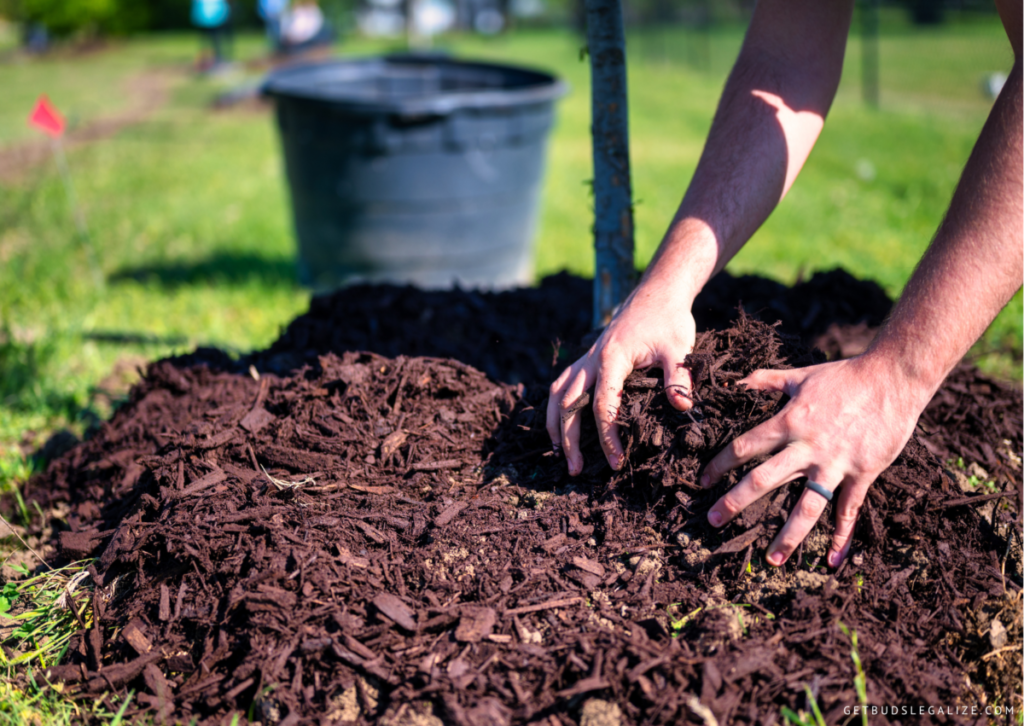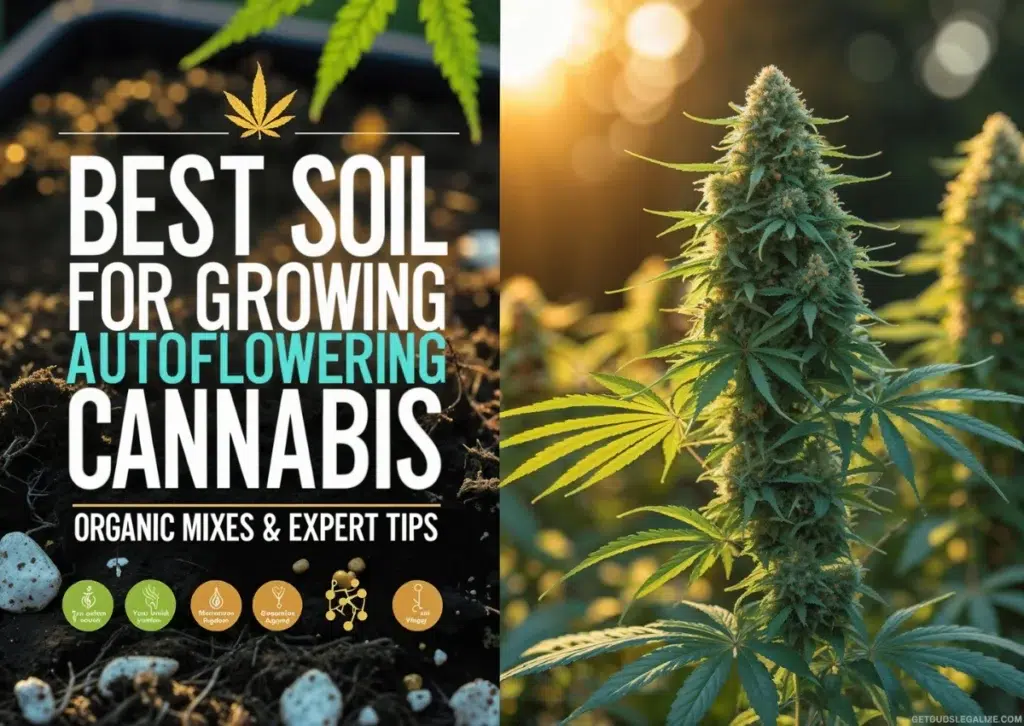Living Soil for Cannabis Plants: Guide for Organic Growers
If you are looking for the best way to grow cannabis plants that are healthy, potent, and environmentally friendly, you might want to consider using living soil. Living soil is a type of organic soil that is rich in microbial life, such as bacteria, fungi, worms, and insects. These organisms break down the organic matter and make nutrients available to plants. LSO also helps to improve soil structure, water retention, aeration, and pest control.
LSO is different from conventional soil which relies on synthetic fertilizers and pesticides. Conventional soil can be harmful to plants, the environment, and consumers, as it can cause a nutrient lockout, salt buildup, soil degradation, water pollution, and toxic residues. LSO, on the other hand, mimics the natural cycle of life in the soil, creating a balanced and sustainable ecosystem that supports the growth and health of cannabis plants.
What are the Living Soil Benefits?

Using LSO for cannabis plants has many benefits for both the growers and the consumers. Here are some of them:
- Provides all the nutrients and minerals that cannabis plants need throughout their life cycle. You don’t need to add any synthetic fertilizers or supplements to your plants.
- Improves the quality and quantity of your cannabis harvest. Your plants will grow faster, stronger, and healthier, producing bigger buds with more resin and terpenes.
- Enhances the flavor and aroma of your cannabis buds. Your buds will have a more complex and natural taste and smell reflecting your living soil’s terroir.
- Protects your plants from pests and diseases. The beneficial microbes and fungi in your living soil will help to fight off harmful pathogens and insects that can damage your plants.
- It conserves water and reduces waste. Your living soil will retain moisture better than conventional soil, reducing the need for frequent watering. You also don’t need to dispose of your living soil after each harvest; you can reuse it by adding more amendments and inoculants.
- Is environmentally friendly and ethical. Your living soil will not pollute the water or the air with synthetic chemicals or runoff. You will also support the biodiversity and sustainability of life in the soil.
Living Soil vs Super Soil: Pros and Cons
Living organic soil and super soil are two types of organic growing media that can be used for cultivating cannabis plants. Both have advantages and disadvantages, depending on the grower’s preferences, goals, and budget. Here are some of the pros and cons of each option:
Pros of Using LSO are:
- It produces high-quality cannabis with rich flavors, aromas, and terpenes, as well as enhanced potency and medicinal benefits.
- It reduces the need for external inputs, such as fertilizers, pesticides, and fungicides, as the soil provides all the nutrients and protection that the plants need.
- It is environmentally friendly and sustainable, as it reduces waste, runoff, and pollution, and promotes biodiversity and soil health.
Cons of using LSO are:
- It requires more time, effort, and knowledge to prepare and maintain, as it involves sourcing quality ingredients, mixing them in the right proportions, composting them for several weeks or months, and monitoring the soil conditions regularly.
- It can be more expensive than other media, especially if buying ready-made living soil mixes from reputable brands or suppliers.
- It can be more challenging to control or adjust the pH, moisture, and nutrient levels of the soil, as they depend on microbial activity and organic matter decomposition.
Pros of using super soil are:
- It produces large yields of potent and flavorful cannabis buds, as it provides an abundance of nutrients to the plants during their most crucial stage.
- It simplifies the growing process, as it eliminates the need for feeding schedules or nutrient solutions. The grower only needs to water the plants with plain water throughout their cycle.
- It allows for more flexibility and creativity in choosing or creating different super soil recipes, depending on the grower’s preferences or goals.
Cons of using super soil are:
- It can be too hot or strong for some plants or strains, especially if they are sensitive to nutrient burn or salt buildup. The grower may need to adjust the amount or ratio of amendments in the super soil mix accordingly.
- It can be difficult to reuse or recycle, as it may lose its potency or quality after one or more cycles. The grower may need to add more amendments or compost to revitalize the super soil for future use.
- It can attract pests or pathogens, such as fungus gnats or mold, if not stored or handled properly. The grower may need to ensure that the super soil is dry, airy, and sterile before using it.
LSO and super soil are both viable options for organic cannabis cultivation. They offer different benefits and challenges to the grower, who should weigh them carefully before deciding which one suits their needs and expectations better.
Living Soil Recipe for Cannabis Plants

To make your own LSO for cannabis plants, you will need some basic ingredients and tools. Here are some steps to follow:
1. Start with a base of light potting soil that is peat moss-based and contains perlite or vermiculite for drainage. You can buy this at any garden center or online. You will need about 70 pounds of it for a 100-gallon batch of living soil.
2. Add some compost to your base soil. Compost is decomposed organic-matter that provides nutrients and beneficial microbes to your soil. You can make your own compost from kitchen scraps, yard waste, and manure, or buy it from a local source. You will need about 35 pounds of compost for a 100-gallon batch of LSO.
3. Add some humus to your base soil. Humus is a dark, stable form of organic-matter that improves the structure and water-holding capacity of your soil. You can get humus from forest floor material, leaf mold, or worm castings. You will need about 17 pounds of humus for a 100-gallon batch of LSO.
4. Add some amendments to your base soil. Amendments are substances that enhance the fertility and quality of your soil. There are many types of amendments you can use, depending on your preferences and availability. Some common amendments are:
- Neem seed meal: A natural insecticide and fungicide that also provides nitrogen and trace minerals to your soil. You will need about 12 cups of neem seed meal for a 100-gallon batch of LSO.
- Kelp meal: A seaweed product that provides potassium, calcium, magnesium, iron, and micronutrients to your soil. It also stimulates root growth and plant immunity. You will need about 6 cups of kelp meal for a 100-gallon batch of LSO.
- Fish bone meal: A high-phosphorus amendment that promotes flowering and bud development in your cannabis plants. It also contains calcium and other minerals. You will need about 6 cups of fish bone meal for a 100-gallon batch of LSO.
- Dolomite lime: A mineral amendment that balances the pH and adds calcium and magnesium to your soil. It also prevents nutrient lockout and deficiency. You will need about 3 cups of dolomite lime for a 100-gallon batch of LSO.
- Azomite: A volcanic rock dust that adds trace minerals and micronutrients to your soil. It also improves the flavor and aroma of your cannabis buds. You will need about 3 cups of azomite for a 100-gallon batch of LSO.
5. Mix all the ingredients together in a large container or tarp. Use a rake, shovel, or your hands to thoroughly combine everything until you have a uniform mixture. Make sure there are no clumps or dry spots in your soil.
6. Moisten your soil with water until it feels damp but not soggy. You want your soil to have the consistency of a wrung-out sponge. This will activate the microbial life in your soil and start the decomposition process.
7. Cover your soil with a tarp or plastic film and let it cook for at least four weeks. This will allow the organic matter to break down and release nutrients into your soil. You may notice some heat, steam, or smell coming from your soil during this time. This is normal and indicates that the composting process is happening.
8. Check on your soil every week and turn it with a rake or shovel to aerate it and prevent anaerobic conditions. You may also need to add some water if your soil feels too dry or squeeze out some excess water if it feels too wet.
9. After four weeks, your LSO should be ready to use for growing cannabis plants. You can fill your pots or beds with your soil and plant your cannabis seeds or clones directly into it. You should not need to add any additional nutrients or supplements during the growing cycle, as your LSO will provide everything your plants need.
Should you start cannabis seeds in living soil?

Whether you want to start cannabis seeds in LSO depends on your personal preferences, budget, level of experience, and growth goals. If you want to grow cannabis organically and naturally and are willing to invest more time and money in your soil, then LSO might be a good option for you. However, if you want to have more control and convenience over your growing medium and are looking for a cheaper and easier way to start your seeds, then LSO may not be the best choice for you.
Conclusion
Living soil is a great option for cannabis growers who want to produce high-quality buds in an organic and sustainable way. By creating a living ecosystem in your soil, you can provide your plants with everything they need without relying on external inputs. LSO improves the taste and smell of your buds by enhancing their natural terpene and cannabinoid profiles.
We rely on our partners to provide you with the best products and services. By purchasing from them, you support our website and get high-quality products. Thank you for being part of our community!




























